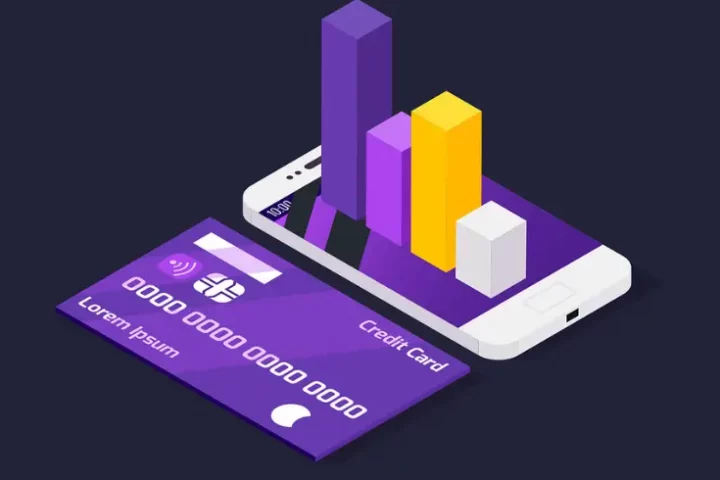Student loans have become an integral part of higher education financing, enabling countless individuals to pursue their academic dreams. However, the burden of student loan debt can be overwhelming, prompting many borrowers to seek relief through refinancing. In this blog post, we will delve into the world of student loan refinancing rates, providing a comprehensive guide to help borrowers make informed decisions and potentially save money in the process.
Understanding Student Loan Refinancing Rates: The Prelude
Student loan refinancing is a financial strategy that can bring much-needed relief to borrowers seeking to manage their educational debt more effectively. This process involves taking out a new loan with better terms to pay off existing student loans. The potential benefits are multifold: lower interest rates, reduced monthly payments and simplified repayment plans. However, it’s crucial to note that the approach differs when dealing with federal and private student loans.
Refinancing Federal Student Loans
When considering refinancing federal student loans, it’s essential to weigh the pros and cons. Refinancing can provide a lower interest rate, but it comes at the cost of losing federal benefits such as income-driven repayment plans, loan forgiveness programs, and generous deferment options. Therefore, borrowers must carefully assess their financial situation and future goals before deciding to refinance federal loans.
Refinancing Private Student Loans
For private student loans, refinancing is generally a more straightforward decision. Borrowers can often secure better terms without worrying about losing federal benefits. This makes it an attractive option for those who don’t rely on federal loan perks and want to reduce their interest rates or adjust their repayment schedules.
Eligibility Criteria and Credit Scores
To qualify for student loan refinancing, lenders typically require a stable income, a good credit history, and a solid credit score. A credit score of around 650 or higher is generally necessary to secure the best refinancing rates. However, eligibility criteria can vary between lenders, so it’s advisable to shop around and compare offers to find the most favorable terms.
In conclusion, understanding student loan refinancing is key to making informed decisions about managing educational debt. It offers the potential for substantial benefits, but borrowers must carefully consider the differences between federal and private loan refinancing, as well as meet eligibility requirements based on their credit history. By navigating this process effectively, individuals can take significant steps toward achieving financial freedom and reducing the burden of student loans
Factors Affecting Refinancing Rates
When it comes to student loan refinancing, understanding the factors that lenders take into account when determining interest rates is crucial. These factors play a pivotal role in shaping the financial landscape for borrowers seeking to refinance their student loans. One of the most significant determinants is the borrower’s creditworthiness, primarily measured by their credit score. Lenders typically offer lower rates to borrowers with excellent credit scores, while those with lower scores may face higher interest rates. Additionally, income and employment history also come into play. A stable income and a strong employment history can improve a borrower’s chances of securing favorable rates.
Another aspect that borrowers should consider is the length of the loan term. While longer loan terms may result in lower monthly payments, they often come with higher overall interest costs. On the contrary, shorter loan terms can lead to higher monthly payments but lower total interest expenses. Thus, understanding how loan term length can impact monthly budgets and long-term financial goals is vital when deciding on the most suitable refinancing option.
In summary, refinancing rates are influenced by a combination of factors, including credit scores, income, employment history, and loan term length. Borrowers should be aware of these elements and their interplay when exploring refinancing opportunities, as they can significantly impact the cost and feasibility of a student loan refinance.
Comparing Lenders and Loan Options:
Student loan refinancing can be a game-changer for borrowers looking to take control of their educational debt. It offers the promise of lower interest rates, reduced monthly payments, and a more manageable path to financial freedom. However, navigating the world of lenders and loan options can be daunting. In this article, we’ll provide an overview of various lenders and their refinancing programs, emphasize the importance of shopping around, and explore the differences between fixed-rate and variable-rate refinancing options.
Overview of Lenders and Refinancing Programs
Numerous financial institutions and online lenders offer student loan refinancing programs. Each lender has its unique features, eligibility criteria, and terms. Some of the prominent players in the field include SoFi, Earnest, CommonBond, and LendKey. It’s essential to research and compare these lenders to find the best fit for your financial situation.
The Importance of Shopping Around
When it comes to refinancing your student loans, one size does not fit all. It’s crucial to shop around and compare rates, terms, and benefits from different lenders. Interest rates can vary significantly, and even a small difference can have a substantial impact on your overall savings. Additionally, pay attention to any extra perks offered by lenders, such as unemployment protection, deferment options, or the ability to release a cosigner.
Fixed-Rate vs. Variable-Rate Refinancing
One of the fundamental decisions you’ll need to make when refinancing is choosing between fixed-rate and variable-rate options.
Fixed-Rate Refinancing:
Pros:
- Predictable monthly payments throughout the loan term.
- Protection from interest rate hikes, even if market rates rise.
Cons:
- Typically higher initial interest rates are compared to variable-rate options.
- This may result in higher overall interest costs if market rates remain low.
Variable-Rate Refinancing:
Pros:
- Often starts with lower initial interest rates than fixed-rate options.
- Potential for lower overall interest costs if market rates remain stable or decrease.
Cons:
- Monthly payments can fluctuate, making budgeting more challenging.
- Risk of higher payments if market interest rates rise over time.
The choice between fixed and variable rates depends on your risk tolerance and financial goals. If you prefer stability and want to protect yourself from potential rate hikes, a fixed-rate option may be more suitable. On the other hand, if you’re comfortable with some uncertainty and believe that market rates will remain favorable, a variable-rate option might offer lower initial costs.
In conclusion, comparing lenders and loan options is a crucial step in the student loan refinancing process. Take the time to research, analyze, and choose the best fit for your financial goals and circumstances. Additionally, carefully consider whether a fixed-rate or variable-rate refinancing option aligns with your risk tolerance and long-term plans. By making informed decisions, you can pave the way for a brighter financial future and more manageable student loan debt.
Strategies to Secure the Best Refinancing Rates
When it comes to student loan refinancing, securing the best rates can make a substantial difference in your financial journey. Here are some strategies to help you maximize your chances of getting lower interest rates:
1. Improve Your Credit Score:
One of the most effective ways to secure lower refinancing rates is by enhancing your creditworthiness. Paying bills on time, reducing credit card balances, and resolving any outstanding issues on your credit report can lead to an improved credit score. Lenders typically offer better rates to borrowers with excellent credit, so dedicating time to boost your score is a wise investment.
2. Consider a Co-Signer:
If your credit score is not where you’d like it to be, or if you have limited credit history, having a co-signer with a strong credit profile can significantly increase your chances of qualifying for lower rates. A co-signer essentially vouches for your ability to repay the loan, which can instill confidence in lenders and lead to more favorable terms.
3. Negotiate with Lenders:
Don’t hesitate to reach out to potential lenders and discuss your individual circumstances. Some lenders are open to negotiations and may be willing to offer better rates based on your unique financial situation. Be prepared to provide evidence of your creditworthiness and financial stability to support your case.
By implementing these strategies, you can enhance your eligibility for competitive refinancing rates and take significant steps toward reducing the burden of your student loans. Remember that it’s essential to do thorough research, compare offers from various lenders, and choose the option that aligns best with your long-term financial goals.
Potential Pitfalls and Considerations for Student Loan Refinancing Rates
Refinancing student loans can be an enticing prospect, offering the promise of lower interest rates and improved financial management. However, it’s essential to tread cautiously and consider the potential pitfalls and drawbacks associated with this decision. In this article, we’ll address these concerns to help borrowers make informed choices when it comes to refinancing their student loans.
Loss of Federal Loan Benefits
One of the most significant drawbacks of refinancing federal student loans is the loss of valuable federal benefits and protections. Federal loans come with perks like income-driven repayment plans, loan forgiveness programs, generous deferment options, and forbearance in times of financial hardship. When you refinance federal loans with a private lender, you forfeit these benefits. It’s crucial to weigh the potential savings from lower interest rates against the loss of these safeguards.
Long-Term Financial Implications
Refinancing can lead to lower monthly payments and immediate financial relief, but it’s essential to consider the long-term implications. Extending the loan term to reduce monthly payments can result in higher overall interest costs. Borrowers should carefully assess their financial goals and budget to determine whether the immediate benefits of refinancing outweigh the potential long-term costs.
Interest Rate Risks
While refinancing can lead to lower interest rates, borrowers opting for variable-rate loans should be aware of the inherent risks. Variable rates are subject to market fluctuations and can rise over time, potentially increasing monthly payments and overall interest costs. It’s essential to have a solid understanding of your risk tolerance and financial stability when choosing between fixed and variable-rate refinancing options.
Private Lender Variability
Not all private lenders offer the same terms and benefits. Borrowers must thoroughly research and compare offers from various lenders to find the most favorable terms for their unique financial situation. Additionally, some lenders may have strict eligibility criteria, making it essential to ensure you meet their requirements before applying.
Impact on Credit Scores
The refinancing process typically involves a hard credit inquiry, which can temporarily lower your credit score. While this dip is usually short-lived, it’s something to be aware of if you plan to apply for other types of credit shortly after refinancing.
In conclusion, while student loan refinancing can provide significant financial benefits, borrowers must approach it with caution and a full understanding of the potential pitfalls. The loss of federal loan benefits, long-term financial implications, interest rate risks, and lender variability all require careful consideration. Before refinancing, it’s advisable to thoroughly assess your financial goals, evaluate your creditworthiness, and compare offers from multiple lenders to ensure that the decision aligns with your overall financial strategy.
Case Studies and Success Stories: Student Loan Refinancing Rates
Real-life examples often provide the most compelling evidence of the positive impact of student loan refinancing on borrowers’ lives. Let’s explore a few success stories that highlight the transformative power of refinancing in the pursuit of financial well-being and debt repayment.
Case Study 1: Sarah’s Debt-Free Journey
Sarah, a recent graduate burdened with both federal and private student loans, decided to explore refinancing options to ease her financial stress. By refinancing her loans with a lower interest rate, she significantly reduced her monthly payments. This newfound flexibility allowed her to allocate extra funds towards her high-interest credit card debt. Over time, Sarah not only paid off her credit cards but also made extra payments towards her student loans, slashing years off her repayment term. Today, she is well on her way to becoming debt-free and has regained control over her finances.
Case Study 2: Mark’s Path to Financial Freedom
Mark, a mid-career professional, had been carrying his student loan debt for over a decade. Feeling trapped by the high-interest rates on his loans, he decided to refinance. The lower interest rate reduced his monthly payments, allowing him to increase contributions to his retirement savings and emergency fund. With disciplined financial planning, Mark made extra payments towards his refinanced loans and achieved something he once thought was unattainable: financial freedom. He now enjoys a debt-free life, secure retirement plans, and a sense of financial security that was previously elusive.
These case studies serve as inspiring reminders that refinancing student loans can be a transformative step toward financial well-being. While everyone’s situation is unique, the stories of Sarah and Mark demonstrate the potential for lower interest rates and reduced monthly payments to create a path to debt repayment and financial freedom. By exploring refinancing options and making informed decisions, borrowers can take significant strides toward achieving their financial goals.
The Crescendo of Savings: Benefits of Student Loan Refinancing Rates
Imagine the crescendo of a musical piece, where the sound builds to a powerful peak. Similarly, student loan refinancing rates can lead to a crescendo of financial savings. With a lower interest rate, you could save a substantial sum over the life of your loan. This newfound savings might enable you to pay off your debt faster, invest in your future, or simply enjoy more financial flexibility.
The Art of the Refinancing Process: A Step-by-Step Guide
Let’s break down the process of refining your loan composition. First, research and compare various lenders‘ rates, terms, and benefits. Next, gather your financial documents, such as credit history and proof of income. Once you’ve chosen a lender, you’ll apply for refinancing. If approved, your new lender will pay off your existing loans, and you’ll start making payments to them. Voilà, you’ve created a harmonious arrangement that better aligns with your financial goals.
When to Play the Refinancing Tune: Timing Matters
Timing, like tempo in music, is crucial when considering student loan refinancing rates. As interest rates fluctuate, it’s essential to strike while the rates are favorable. Additionally, refinancing might be more beneficial for those with improved credit scores or steady incomes since they often qualify for better rates. So, just as a skilled conductor knows when to bring in each instrument, you’ll want to time your refinancing decision for maximum impact.
A Future Composed by You: The Finale
In this financial symphony, you’re the composer, and student loan refinancing rates are your instruments of change. By conducting thorough research, understanding the factors at play, and timing your moves strategically, you can compose a future that resonates with financial stability and freedom. Each decision you make shapes the melody of your financial success, creating a composition that sings of a life unburdened by high-interest rates.
Conclusion on Student Loan Refinancing Rates
Student loan refinancing rates can significantly impact borrowers’ financial futures. By understanding the intricacies of refinancing, comparing lenders, and considering individual circumstances, borrowers can make informed decisions to potentially save money and expedite their journey towards a debt-free life. Remember, knowledge is power when it comes to navigating the world of student loan refinancing rates.










